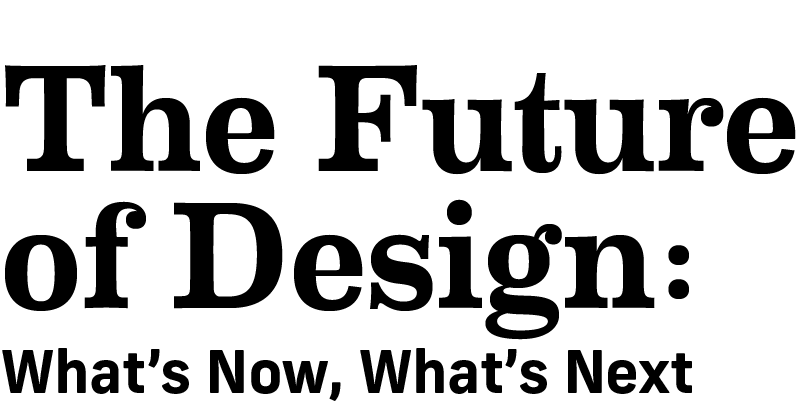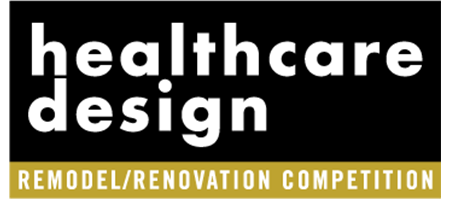Considering the macro-level trends having the greatest influence on healthcare facility design today, industry leaders point to a variety of issues, from economic pressures, rising costs, and uncertain funding sources to demographic shifts and changing governmental policies.
Suzen Heeley, executive director, design and construction, for Memorial Sloan Kettering Cancer Center (New York), says for her organization, which has a strong research focus, recent cuts to federal funding and National Institutes of Health (NIH) grants under the second Trump administration are one of the biggest concerns.
“We’re thinking about how we respond to that in general, tightening on expenses as best we can, with increases in medical and surgical supplies and pharmaceutical costs going up,” she says. “It’s really been tough for us to try to figure out what’s the way forward while maintaining quality in the way we approach our projects.”
Kirk Rose, president of HMC Architects (Los Angeles), says cuts in NIH funding are impacting his firm’s clients on the West Coast, causing some organizations to put construction and capital projects on hold.
“California is a high-cost, high-regulation state, so when those federal reimbursements are lowered, they [projects] can’t go forward,” he says.
In some cases, organizations are beginning to look at philanthropy to raise more money to fund project work, says Jason Schroer, global practice director, community, at HKS (Dallas).
“But we’re also hearing that there just needs to be patience, and there’s hope that the federal government will get its act back together and begin to refund or replenish some of the funnel that’s been put on pause.”
Rising costs, material sourcing impacting facility projects
This challenging landscape is impacting design strategies and project types moving forward in the healthcare sector.
For example, Julie Kent, senior director of planning and consulting for Albert Kahn Associates (Detroit), says on a project the firm was pursuing earlier this year, the healthcare system sought a Lean design approach to reduce net square footage per patient, with single-loaded corridors and centralized nurse stations—ideas that the industry has been moving away from in recent years.
“It will be interesting to see if the challenges of increased construction costs will influence a shift in direction to some of the patient-centered and operational-efficiency design features that we’ve put in place over the past 25 years,” she says. “Will we see a shift back to some of the 1980s and ’90s type of design strategies. I’m not promoting that we should, but it will be interesting to see how costs and square footage starts to balance out.”
Rose says a big focus for projects will be to solve these problems to make projects fundable.
“It’s a bleak picture unless we can figure out smart ways to design things but not sacrifice the patient care efficacy and throughput,” he says.
Shifting care to less expensive facilities
One strategy, adds Hank Adams, global director of health for HDR (Dallas), is working with clients to “prioritize what clinical functions have to be in an acute care facility,” he says.
“It’s trying to decant as much out of it as possible to less expensive facilities to save on construction and operational costs while reducing the overall footprint of acute sites.”
For example, Kent says she’s been part of projects that have discussed moving an emergency department into Group B Business occupancy space as a means to reduce construction costs compared to Group I-2 occupancy, depending on state regulations.
For those main programs that need to stay in acute care spaces, Rose says the focus should be on making them as operationally and area efficient as possible—for example, in the ED, optimizing layouts and flow to move patients through quickly and safely.
In other areas, there may be opportunities to share spaces, such as holding, observation, and pre- and post-op, to reduce square footage while still meeting building codes.
Travis Tyson, who recently joined DesignGroup (Columbus, Ohio) as principal and healthcare market leader, says another strategy to address cost and construction challenges is early procurement of supplies and materials as well as working with manufacturers and suppliers to lock in prices.
“Cost variability is a big thing right now that is probably affecting everybody as we go forward on projects,” he says.
Changes in healthcare project delivery methods
Industry leaders say priorities are shifting on project timelines and delivery methods, too.
For example, Adams says that he’s had some clients break up projects into phases “to make sure that whatever we do on the front end can meet their business plan,” he says. “But they also are recognizing that the longer they postpone projects, the more the costs are going to go up, so there’s this kind of incremental movement on projects where they might start and stop over time.”
Rose says his firm is seeing an increase in design-build and progressive design-build approaches that are executed by the same firm, creating a single point of responsibility on projects, which can help drive down costs and accelerate the schedule for construction.
“It’s using design-build so that [clients] don’t have to worry about whether [a project] is feasible,” he says. “The team figures out not only the programming and planning and stacking, but also some of the gnarly things about construction implementation and the timing.”
Time for integrated project delivery models?
Another model gaining traction, says Adams, is the integrated form of agreement (IFOA), which is a multiparty agreement for the design and delivery team.
“One thing I love about the integrated project delivery models is that rather than every partner on the project, whether it’s design, construction, manufacturing, or equipment, using a contingency model for how they price projects, the actual risk and opportunity on the project is owned by the collective team,” he says. “What happens is you intentionally manage the risks of the project. Whether it’s schedule, supply chain, inflation, or whatever, it’s all managed collectively in a single target-value design process.”
Overall, industry leaders say they expect growing discussion about alternative delivery models to manage complex and risky projects.
“We’re trying to get to a higher level of solution confidence and price assurance to help owners make better decisions sooner,” rather than waiting too long and finding out a project is too expensive, resulting in canceled or delayed work, adds Schroer. “We’re seeing much earlier integration of a real-time costing model, coming alongside the design process as we go.”
Future design priorities in healthcare
Looking ahead five to 10 years, what design priorities are top of mind for healthcare organizations and national architecture and design firms?
“For us, it’s flexibility and the ability to adapt to whatever might come our way that we haven’t imagined,” Heeley says, as well as looking at new construction methodologies, including digital construction and prefab modular methods. “We’ve looked at the ROI for [digital construction] in patient rooms versus stick-built and the ROI happens in 2-3 years. So, while it might be more expensive up front, the long-term return on that investment is great and less downtime in patient rooms, which equates to revenue,” she says.
On Tyson’s list is prioritizing spaces that support staff wellness within facilities, including respite areas where caregivers can go to decompress or take a moment. “Especially those that are working on some higher acuity floors, such as intensive care units,” he says.
Schroer agrees. “We’ve spent years talking about patient-focused care, but the staff is becoming much more a part of the conversations,” he says. “We’ve done a lot of work around nurse burnout and trying to determine the design strategies that could help to support a better experience for caregivers,” he says.
To help these efforts become a priority, in the face of broader industry challenges, Kent says project teams will need to be able to demonstrate value and bottom-line savings to clients, such as how the upfront costs and space allotment to add a staff respite room can pay off in less employee turnover, which can impact hiring and training budgets.
Additionally, Rose says he expects technology to help drive some diagnostic services out of the hospitals and medical office buildings, with more wearables being used to support communication between patients and their doctors. “The only reason you’ll have to go in is when things get bad or you have a planned procedure,” he says. “Even then, they’re going to be less invasive and there will be quicker turnarounds.”
Call for innovation in healthcare design
With all the economic pressure in the system—in particular, lower reimbursements and the cost to build increasing—Adams says the industry needs to look for better ways to distribute care into rural communities. “For this industry, the challenge is going to be to innovate urgently to address these big problems of cost and access to care,” he says.
Considering these challenges, Rose says architects have an opportunity to deliver new ideas, make things more efficient, and help guide clients toward these care strategies. “We should contribute creativity to that,” he says.
Anne DiNardo is editor-in-chief of Healthcare Design and can be reached at [email protected].
For more trends insights from HCD’s October issue, read Charting Progress: 25 Years Of Healthcare Design.












